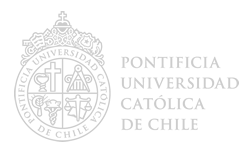Soil erosion by water estimated for 99 Uruguayan basins
Abstract
Soil erosion can be accelerated by agricultural intensification, and the soil loss can alter the quality of water bodies. Sustainable agricultural production therefore requires the management of erosion and potential water pollution. In Uruguay, where there is heavy use of soil for agriculture, there is a need to continually develop and update erosion management policies. In this framework, we estimated the erosion in 99 drainage basins by analyzing and managing the information required (K, L, S, C and R-factors) in the universal soil loss equation (USLE) and the revised universal soil loss equation (RUSLE) in a geographical information system (GIS). The studied drainage basins encompass 73% of the area of Uruguay. The results include the following values: the K-factor range from 0.0073 to 0.088 (t ha h)(ha MJ mm)-1, the R-factor range from 3,547 to 9,342 (MJ mm)(ha h yr)-1, the C-factor range from 0 to 0.155, the slope gradients are less than 4.3% in 78% of the soils, and the multiplicative products of L and S are less than 0.73 in 75% of the cases. The drainage basin characteristics allowed the identification of 4 homogeneous regions based on their erosion behavior. The northern-western-southern basins cluster and Sierras del Este basins clusters indicate the possibility of managing their erosion through control of vegetation cover, which is represented by the C-factor. In general, this forecast of soil erosion by water (92.9% of the soil polygons and 99.9% of the drainage basins) indicates a mean soil loss of less than 7 t (ha yr)-1 corresponding to the land cover surveyed in 2011.
Full Text:
PDFDOI: http://dx.doi.org/10.7764/rcia.v44i2.1717

